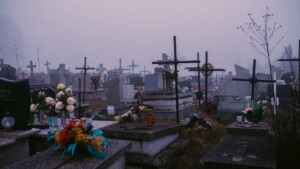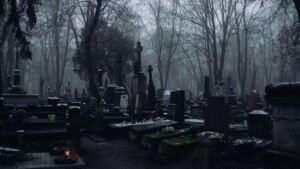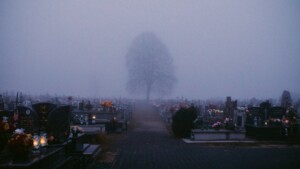In the vast realm of spiritual beliefs, the concept of resurrection, particularly “orang yang dibangkitkan dari alam kubur diarahkan menuju sua”, holds a profound significance. This Indonesian phrase translates to “those resurrected from the grave are directed towards their destiny”. It’s a topic that’s been explored in religious texts, philosophical debates, and cultural narratives.
The belief in life after death, and the journey that follows, is not unique to any one culture or religion. It’s a universal question that’s intrigued mankind for centuries. This article aims to delve into this concept, shedding light on its various interpretations and implications.
Orang Yang Dibangkitkan Dari Alam Kubur Diarahkan Menuju Suatu Tempat Yaitu
Throughout human history, mankind’s understanding and interpretation of resurrection has been complex and diverse. It plays a significant role in many world religions, painting vivid pictures of life after death and the subsequent journey that the soul embarks on.
 In Christianity, it’s believed that the righteous will attain an eternal life through resurrection. The resurrection of Jesus Christ, in particular, serves as a cornerstone in Christian faith. He vanquished death, rose again, and paved the way for everyone else.
In Christianity, it’s believed that the righteous will attain an eternal life through resurrection. The resurrection of Jesus Christ, in particular, serves as a cornerstone in Christian faith. He vanquished death, rose again, and paved the way for everyone else.
In Indonesian culture, the phrase “orang yang dibangkitkan dari alam kubur diarahkan menuju sua” brings out an intriguing perspective. It means “those resurrected from the grave are directed towards their destiny”. This inherently means that death is not an end, but rather a step towards an individual’s ultimate destiny.
Islamic belief, on the other hand, also holds a similar perspective. It asserts that every individual will be resurrected for judgment and then subsequently granted paradise or hell based on their earthly deeds.
Hinduism and Buddhism, while not explicitly addressing resurrection, have introduced the concept of reincarnation. This suggests a cycle of birth, death, and rebirth till one achieves enlightenment.
Orang yang dibangkitkan dari alam kubur diarahkan menuju suatu tempat yaitu, hence, the concept of resurrection, in all its varied interpretations and manifestations, remains at the heart of humanity’s quest for understanding life and death. This continues to captivate our imagination as we explore what fate awaits us beyond the grave.
Interpretations from Religious Texts
Diving deeper into this concept, it’s also seen in religious scriptures which provide an array of interpretations. Christianity, for instance, centers its belief around the resurrection of Jesus. The New Testament asserts that Jesus, put to death by crucifixion, was resurrected on the third day. This event unfolds the core message of triumph over death and eternal life.
 In Islam, the resurrection bears a moral dimension. The Quran strongly emphasizes life after death and resurrection as a time of judgment. It outlines that individuals, resurrected from their graves, will face an assessment of their deeds. Those who followed righteousness will be rewarded with paradise, while others face a daunting afterlife in hell.
In Islam, the resurrection bears a moral dimension. The Quran strongly emphasizes life after death and resurrection as a time of judgment. It outlines that individuals, resurrected from their graves, will face an assessment of their deeds. Those who followed righteousness will be rewarded with paradise, while others face a daunting afterlife in hell.
Hinduism and Buddhism, in comparison, perceive resurrection differently. These eastern philosophies introduce the concept of reincarnation, a recurrent cycle of birth, death, and rebirth. Instead of a resurrection to a singular eternal life, they propagate continuous cycles until liberation or Nirvana is achieved.
Orang yang dibangkitkan dari alam kubur diarahkan menuju suatu tempat yaitu, the teachings of reincarnation emphasize karma, the law of cause and effect, where each action influences an individual’s future in this life or the next.
Exploring scientific arenas what starts to unravel is a modern resurrection framework, where concepts like cryonics and cloning are being discussed. Cryonics involves freezing a legally dead person to resuscitate them in the future. Cloning, on the other hand, is creating genetically identical copies of a creature.
Philosophical Debates on Life After Death
The argument regarding the afterlife has been the subject of interest in philosophical circles for centuries. Even those who lack faith in any particular religion often find themselves pondering the existence of an afterlife. These discussions essentially pose questions such as: ‘What happens after we die? Is death truly the end, or is there something beyond it?’ Posing questions like these reflect mankind’s intrinsic curiosity about the universe and our place within it.
 Dualism and Monism, two significant philosophical concepts in the debates concerning life after death, warrant specific attention. Dualists, like Rene Descartes, argue that the mind and body are separate entities and that a person’s consciousness can continue after physical death. In contrast, Monists hold that the mind and body are inseparable. These philosophers propose that ‘death’ implies the definitive annihilation of personhood.
Dualism and Monism, two significant philosophical concepts in the debates concerning life after death, warrant specific attention. Dualists, like Rene Descartes, argue that the mind and body are separate entities and that a person’s consciousness can continue after physical death. In contrast, Monists hold that the mind and body are inseparable. These philosophers propose that ‘death’ implies the definitive annihilation of personhood.
Cultural Narratives and Beliefs
Across the world, diverse cultures harbor distinct perspectives on what happens after death. These viewpoints translate into enriching, complex narratives that permeate societal norms, religious practices, and individual’s life-decisions.
For example, in many western cultures, it’s often portrayed that individuals journey to an afterlife upon death- they could ascend into heaven or descend into hell, based on their earthly conduct. Juxtaposed against this, let’s explore some Eastern and indigenous cultures. They usually conceptualize post-death existence as a cyclic process.
 Among the Hindus, it’s a common belief that the soul is eternal and takes on different physical forms through a cycle of birth, death and rebirth – a doctrine known as reincarnation. Meanwhile in Buddhism, they uphold the belief in samsara – an endless cycle of birth, death, and rebirth until an individual attains enlightenment.
Among the Hindus, it’s a common belief that the soul is eternal and takes on different physical forms through a cycle of birth, death and rebirth – a doctrine known as reincarnation. Meanwhile in Buddhism, they uphold the belief in samsara – an endless cycle of birth, death, and rebirth until an individual attains enlightenment.
In contrast, indigenous cultures, like the Australian Aborigines, view death as a transition into another realm, an ‘ancestor world’, and a parallel space to the living world.
Moreover, in African tribal societies, death often marks the beginning of a new existence as a spirit or ancestor, preserving a strong connection with the living.
Examining these varied cultural beliefs helps emphasize how diverse human understanding and acceptance of death can be. This diversity often influences the way societies form their legal systems, health care strategies, and even environmental policies.
Understanding the Journey towards Destiny
Many societies across the world hold various beliefs regarding what happens after someone dies, and central to these narratives is the journey towards destiny. This belief posits that after death, individuals undergo a transition, guided towards their final resting place or higher sphere of existence.
For instance, Christian belief often refers to the soul ascending to heaven or being consigned to hell based on earthly actions. Each person’s actions reflect, in a sense, their unique road map towards their destiny, revealing an intricate interplay of moral examinations, spiritual introspection, and eternal judgment.
Narratives of the journey are also embedded in many indigenous cultures. In Australian Aboriginal beliefs, there’s the concept of the ‘ancestor world’ which suggests a transformation from the physical to a world of the ancestors after death. This transition offers more complexity than a mere ‘end’, envisioning death as a gateway to altered existence.
 Traditional African societies also envelope this transformative idea, viewing death not as a cut-off but as a pathway to becoming a spirit or ancestor. This metamorphosis re-echoes the cyclical nature of existence embracing new beginnings even amidst perceived ends.
Traditional African societies also envelope this transformative idea, viewing death not as a cut-off but as a pathway to becoming a spirit or ancestor. This metamorphosis re-echoes the cyclical nature of existence embracing new beginnings even amidst perceived ends.
In Eastern cultures, notably Hinduism and Buddhism, the belief in reincarnation and samsara respectively underscores this journey. The soul’s constant travel through cycles of death and rebirth, predicated upon one’s karma, delineates their journey towards moksha or liberation.
The presence of such rich and diverse narratives shows that the journey towards destiny is not a straightforward path. Instead, it’s filled with complexity, different dimensions and varying understandings influenced by cultural and religious dispositions. Such a broad understanding can have profound effects on how society reacts to, understands and prepares for the inevitability of death and the journey that lies beyond.
The Journey Towards Destiny
The journey towards destiny post-death is a topic steeped in cultural and religious nuances. From Christian beliefs of heaven and hell to the cyclical existence in indigenous cultures and Eastern philosophies, the narrative varies significantly. It’s a testament to the diverse ways humans grapple with the concept of death and what lies beyond. These beliefs shape societal attitudes, influence legal frameworks, and even dictate healthcare approaches. In understanding these perspectives, we gain insight into the human condition and the universal quest for meaning in our mortal lives. The exploration of these varied beliefs is a fascinating journey in itself, shedding light on our shared humanity and the diverse cultures that make up our global community.


